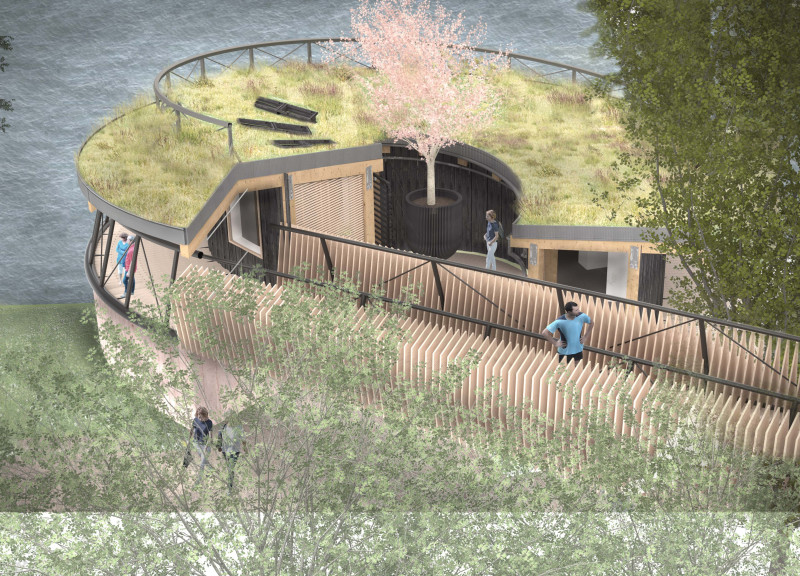5 key facts about this project
The design located in Gauja National Park reflects a careful consideration of the relationship between the built environment and its natural surroundings. The project sits within a landscape known for its rich flora and fauna, serving as an information center for visitors. The overall concept is guided by the idea of "symbolic" landscapes, where the architecture communicates the unique qualities of the site, becoming a point of reference for those who explore the area.
Symbolic Design Concept
The project is based on three core elements: the river Gauja, the changing seasons of the forests, and the park's pristine natural environment. The structure’s layout follows the gentle curves of the river, linking the building to its geographic context. This approach fosters an inviting atmosphere, encouraging visitors to engage with both the architecture and the surrounding landscape.
Integration with Nature
Strategically placed in the park, the information center is designed with a focus on minimizing visual impact. A green roof is integrated into the building design, allowing it to blend with the land while supporting local plant life. This choice emphasizes a commitment to environmental sustainability, ensuring that the architecture respects the natural beauty of the area and enhances the visitor experience.
Material Selection
The building uses materials that connect it to the local environment. Pine timber cladding and tar timber finishes are chosen to evoke the natural setting, while plywood paneling inside creates a warm, welcoming environment for guests. Timber decking links the outside pathways to the interior spaces, reinforcing a continuous flow throughout the site.
At the heart of the design is a suspended tree within the inner courtyard of the information center. This element serves to acknowledge the significance of nature in local culture. It stands as a reminder of the importance of the surrounding ecosystem and encourages visitors to reflect on their relationship with the natural world.





















































